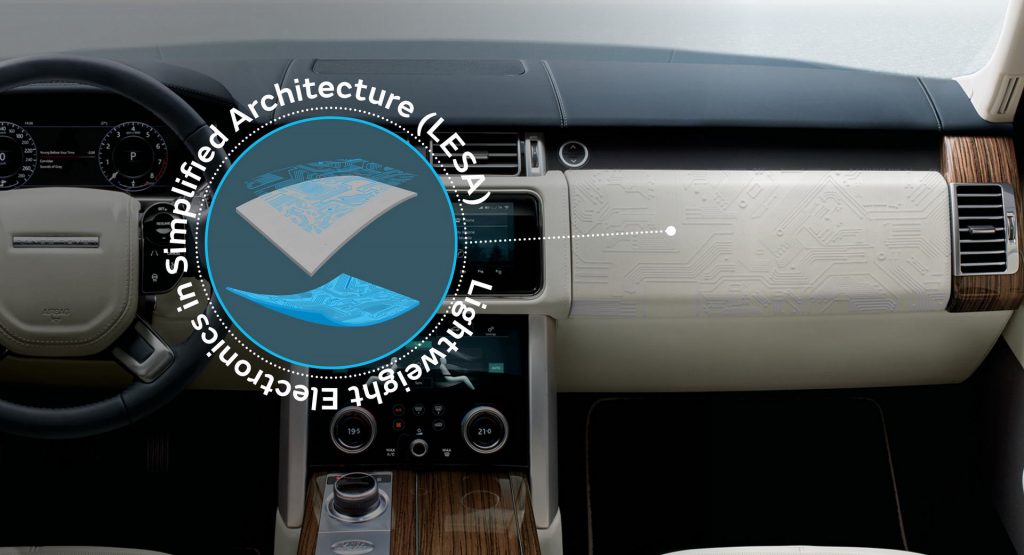Jaguar Land Rover is investing in Lightweight Electronics Simplified Architecture (LESA) technology, which is used in flexible wearables and curved OLED TVs.
For cars, the tech has the potential to radically change the interiors of the future and could offer customers greater ability to customize their vehicles according to their needs. During system trials, this tech cut weight by up to 60% by containing wiring, sensors and computing power within non-metal materials.
By using LESA tech, JLR will be able to “manufacture body panel displays to show information only when needed to help designers achieve streamlined and buttonless designs for future cars.”
Such designs could include customizable interior ambient lighting systems, body controls, wraparound button-less dashboards and advanced fabric/leather heated steering wheels. We could also see digital displays appearing on surfaces like wood without the need for a screen, or solar panels being added to a car without adding extra system weight.
The system uses CAD (computer animated drawings) to virtually “unfold” a part into its 2D structure, then printing the electronic circuit onto the flat surface, mounting the components, before the CAD is folded back into its original 3D state.
The British carmaker has already successfully trialled LESA tech on an overhead control panel prototype, achieving a weight reduction of 60% and minimizing the part size from 50 mm (1.96 inches) to just 3.5 mm (0.13 inches).
Related: Jaguar Highlights Their Design Process, From Sketch To Finished Prototype
“Healthcare, aerospace, consumer technology and military industries are already harnessing the benefits of structural electronics and our research is leading the way in the automotive sector by bringing it into the cabin for the first time,” said JLR electrical research technical manager, Ashutosh Tomar.
“We believe LESA represents the future of vehicle electronics and will enable us to design and manufacture innovative, flexible and customisable cabins for our customers while also reducing weight and cost during production helping us reach Destination Zero.”









